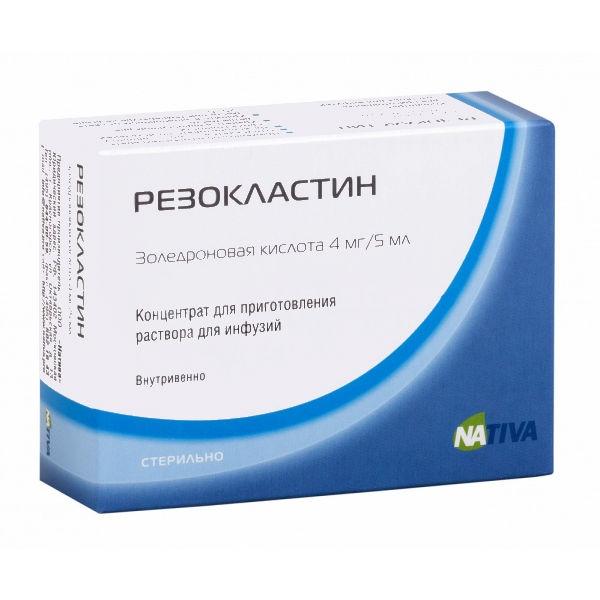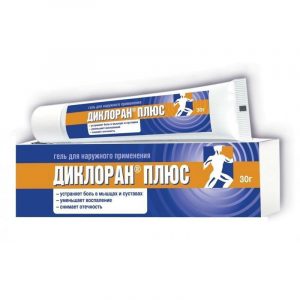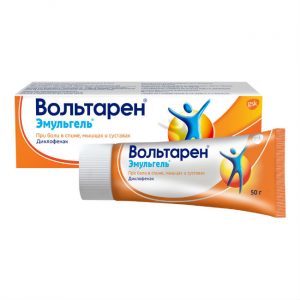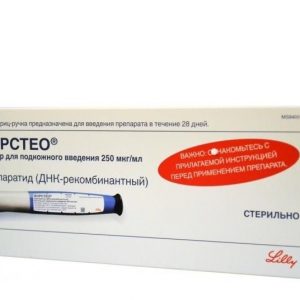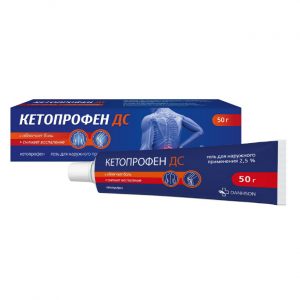Description
Release form
Concentrate for solution for infusion
Pharmacological action
Inhibitor of bone resorption, bisphosphonate.
Has a selective effect on bone. It has an inhibitory effect on bone resorption mediated by osteoclasts.
The selective effect of bisphosphonates on bone tissue is based on a high affinity for mineralized bone tissue, but the exact molecular mechanism providing inhibition of osteoclast activity is still unclear.
In addition to the inhibitory effect on bone resorption, zolendronic acid has other antitumor properties that provide therapeutic efficacy in bone metastases.
In vivo: inhibition of osteoclastic bone resorption, altering the microenvironment of the bone marrow, leading to a decrease in tumor cell growth antiangiogenic activity. Suppression of bone resorption is also clinically accompanied by a marked reduction in pain.
In vitro: inhibition of osteoblast proliferation, direct cytotoxic and proapoptotic activity, synergistic cytostatic effect with antitumor drugs, anti-adhesive / invasive activity.
Zoledronic acid, inhibiting proliferation and inducing apoptosis, It has a direct antitumor effect on human myeloma cells and breast cancer, and also reduces the penetration of breast cancer cells through the extracellular matrix, which indicates its antimetastatic properties.
In addition, zoledronic acid inhibits the proliferation of human endothelial cells and in animals causes an antiangiogenic effect.
In patients with tumor-induced hypercalcemia, it has been shown that zoledronic acid is characterized by a decrease in serum calcium and a decrease in urine excretion.
Indications
– metastases in the bones of common malignant tumors (prostate cancer, breast cancer) and myeloma, including to reduce the risk of pathological fractures, compression of the spinal cord, tumor-caused hypercalcemia, and to reduce the need for radiation therapy or surgical procedures for
bones – hypercalcemia, due to malignant tumor.
Contraindications
– pregnancy
– lactation (breastfeeding)
– hypersensitivity to zoledronic acid, other bisphosphonates and other components of the drug.
Special instructions
With repeated use, serum creatinine concentration should be determined before each administration.
If the findings suggest impaired renal function, it is necessary to assess the risk and benefit of the therapy.
It is not recommended for use in patients with severe impaired renal function (serum creatinine concentration 400 mol / L or 4.5 mg / dl) unless the expected benefit of the therapy prevails over the potential risk.
Prior to infusion, the patient should be excluded from dehydration.
To ensure adequate hydration, administration of saline is recommended before, during, or after the infusion of zoledronic acid.
Patient overhydration should be avoided due to the risk of cardiovascular complications. After the introduction of zoledronic, constant monitoring of the concentration of calcium, phosphorus, magnesium and creatinine in the blood serum is necessary.
If hypocalcemia, hypophosphatemia, or hypomagnesemia develops, short-term maintenance therapy is needed.
There are some reports of impaired renal function with the use of bisphosphonates.
Risk factors for the development of such complications include previous renal failure and prolonged use of zoledronic acid in high doses (8 mg), reduced infusion time.
The efficacy and safety of zoledronic acid in pediatric practice have not been established.
Composition of
Active ingredient:
of zoledronic acid monohydrate
Excipients:
D-mannitol sodium citrate dihydrate
water for injection
Dosage and administration
Intravenously, drip, for at least 15 minutes.
With hypercalcemia, due to malignant tumors (calcium concentration adjusted by albumin level 12 mg / dl or 3 mmol / l), the recommended dose of the drug Rezoklastin FS is 4 mg, once. The infusion is carried out subject to adequate hydration of the patient.
With metastatic bone damage in malignant solid tumors and myeloma, the recommended dose is 4 mg every 3-4 weeks. Additionally, it is recommended to prescribe calcium inside at a dose of 500 mg / day and vitamin D at a dose of 400 IU / day.
In case of postmenopausal and senile form of primary osteoporosis in order to increase bone mineral density and prevent fractures of vertebral bodies and other skeleton bones, the recommended dose is 5 mg once a year.
With secondary osteoporosis, the recommended dose of the drug Rezoklastin FS is 5 mg once a year. If the intake of calcium and vitamin D with food is insufficient, calcium and vitamin D preparations should be additionally prescribed. The duration of the drug is determined by the doctor individually, depending on the patient’s condition.
For the treatment of Paget’s bone disease, a single intravenous administration of the drug in a dose of 5 mg is recommended. Due to the fact that Paget’s bone disease is characterized by a high level of bone metabolism, it is recommended that all patients with this disease take a daily intake of calcium and vitamin D during the first 10 days after administration of zoledronic acid.
Repeated treatment with zoledronic acid for Paget’s bone disease. After the first injection of the drug, a long period of remission is observed. Currently, there is no specific data for re-treatment of Paget’s bone disease.
However, the possibility of re-administering the drug can be considered if a disease recurrence is detected in patients on the basis of the following criteria: the absence of normalization of serum alkaline phosphatase activity, an increase in its activity in dynamics, as well as the presence of clinical signs of Paget’s bone disease, detected during a medical examination 12 months after the introduction of the first dose of zoledronic acid.
Patients with impaired renal function
Hypercalcemia due to malignant tumors. The decision to treat zoledronic acid in patients with severe renal impairment should be made only after a thorough assessment of the risk / benefit ratio. With serum creatinine concentration
Drug Interactions
With the simultaneous use of bisphosphonates and aminoglycosides, the serum calcium level may remain reduced for longer than required, since an additive effect on the serum calcium concentration is possible.
When used concomitantly with drugs, Potentially nephrotoxic drugs increase the risk of impaired renal function
Overdose
Symptoms: in case of accidental overdose of the drug, the patient should be under the constant supervision of a doctor.
In the case of hypocalcemia, accompanied by clinical manifestations, an infusion of calcium gluconate is indicated.
Treatment: Calcium gluconate infusion is indicated.
Storage conditions
In a dry, dark place at a temperature of no higher than 25 ° C.
Term hodnosty
2 years
Active ingredient
Solendronic acid
Pharmacy terms of delivery
Prescription
Dosage form
solution for infusions
